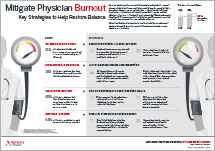Auto logout in seconds.
Continue LogoutSouth Dakota is the best state in which to practice medicine, according to a new analysis from WalletHub—but other states might be better fits for doctors depending on their priorities.
May 16 webcon: Win the war for physician talent—no matter what state you live in
About the list
WalletHub ranked the 50 states and Washington, D.C. based on 16 weighted metrics in two categories:
- Opportunity and competition, which encompassed metrics such as physicians' average annual wage, hospitals per capita, insured population rate, projected share of elderly population, and presence of interstate medical licensure compact law; and
- Medical environment, which encompassed metrics such as quality of public hospital system, punitiveness of state medical board, and annual malpractice liability insurance rates.
Opportunity and competition were worth 70 points, with annual wage making up the greatest share, 11.68 points, of that total. The other metrics in that category were worth 5.83 points each. Medical environment was worth 30 points overall, and all metrics in that category were worth 6 points each.
The best states for doctors
South Dakota was named the No. 1 state in which to practice medicine, followed by:
- Nebraska;
- Idaho;
- Iowa;
- Minnesota;
- Wisconsin;
- Kansas;
- Montana;
- North Dakota; and
- Wyoming.
The worst states for doctors
The 10 lowest-ranked places in which to practice medicine, according to WalletHub, are:
- New Jersey;
- Rhode Island;
- New York;
- Hawaii;
- District of Columbia;
- Massachusetts;
- Oregon;
- Maryland;
- California; and
- Illinois.
WalletHub also released rankings on several individual metrics. For instance, when it came to:
- Average annual wage for physicians—adjusted for cost of living—Mississippi ranked first, while Washington, D.C., ranked last;
- Punitiveness of state medical boards, Maine was least punitive, while Delaware was most punitive; and
- Annual malpractice liability insurance, Nebraska was least costly, while New York was most costly.
Discussion
WalletHub asked several experts to weigh in on what physicians should consider when determining where to practice.
Howard Forman, director of the health care management program at Yale School of Public Health, said, "While there will always be pay disparities, all physicians are well-paid, and the happiest physicians I know are not the best paid." He added, "There are, unquestionably, better and worse areas to work if you are looking to maximize your standard of living. But for some people, there is no dollar figure that would make living in North Dakota worthwhile. For others, there is no dollar figure that would get them to leave North Dakota."
Adam Wilk, assistant professor of health policy and management at Emory University, said indicators doctors should look for when choosing where to practice include where they want to live, where their families' needs will be met, where the population they want to serve is, where their specialty appears to be growing, and where hospitals don't "dominate local health system leadership" as care is increasingly moving to outpatient settings (Kiernan, WalletHub, 3/27; Matthews, Newsweek, 3/28; Oliver, U.S. News & World Report, 3/27; Ellison, Becker's Hospital Review, 3/27).
Win the war for physician talent—no matter what state you live in
Join our experts on Wednesday, May 16 at 3 pm ET to learn four requirements for successful recruitment of millennial physicians--and more--in today's competitive market for talent.
Don't miss out on the latest Advisory Board insights
Create your free account to access 1 resource, including the latest research and webinars.
Want access without creating an account?
You have 1 free members-only resource remaining this month.
1 free members-only resources remaining
1 free members-only resources remaining
You've reached your limit of free insights
Become a member to access all of Advisory Board's resources, events, and experts
Never miss out on the latest innovative health care content tailored to you.
Benefits include:
You've reached your limit of free insights
Become a member to access all of Advisory Board's resources, events, and experts
Never miss out on the latest innovative health care content tailored to you.
Benefits include:
This content is available through your Curated Research partnership with Advisory Board. Click on ‘view this resource’ to read the full piece
Email ask@advisory.com to learn more
Click on ‘Become a Member’ to learn about the benefits of a Full-Access partnership with Advisory Board
Never miss out on the latest innovative health care content tailored to you.
Benefits Include:
This is for members only. Learn more.
Click on ‘Become a Member’ to learn about the benefits of a Full-Access partnership with Advisory Board
Never miss out on the latest innovative health care content tailored to you.

